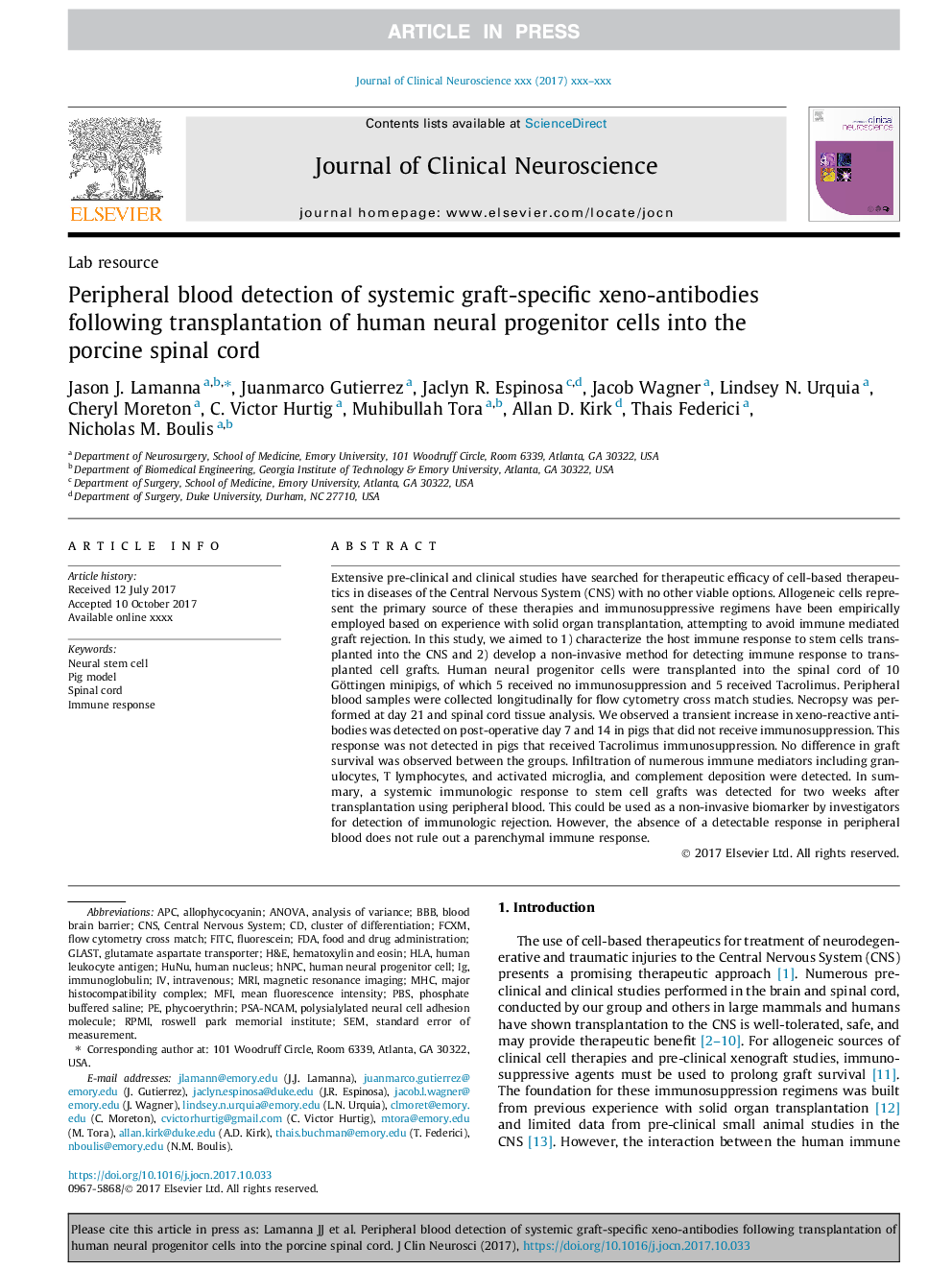| Article ID | Journal | Published Year | Pages | File Type |
|---|---|---|---|---|
| 8685312 | Journal of Clinical Neuroscience | 2018 | 8 Pages |
Abstract
Extensive pre-clinical and clinical studies have searched for therapeutic efficacy of cell-based therapeutics in diseases of the Central Nervous System (CNS) with no other viable options. Allogeneic cells represent the primary source of these therapies and immunosuppressive regimens have been empirically employed based on experience with solid organ transplantation, attempting to avoid immune mediated graft rejection. In this study, we aimed to 1) characterize the host immune response to stem cells transplanted into the CNS and 2) develop a non-invasive method for detecting immune response to transplanted cell grafts. Human neural progenitor cells were transplanted into the spinal cord of 10 Göttingen minipigs, of which 5 received no immunosuppression and 5 received Tacrolimus. Peripheral blood samples were collected longitudinally for flow cytometry cross match studies. Necropsy was performed at day 21 and spinal cord tissue analysis. We observed a transient increase in xeno-reactive antibodies was detected on post-operative day 7 and 14 in pigs that did not receive immunosuppression. This response was not detected in pigs that received Tacrolimus immunosuppression. No difference in graft survival was observed between the groups. Infiltration of numerous immune mediators including granulocytes, T lymphocytes, and activated microglia, and complement deposition were detected. In summary, a systemic immunologic response to stem cell grafts was detected for two weeks after transplantation using peripheral blood. This could be used as a non-invasive biomarker by investigators for detection of immunologic rejection. However, the absence of a detectable response in peripheral blood does not rule out a parenchymal immune response.
Keywords
FCXMAPCPSA-NCAMMFIFITCflow cytometry cross matchPBSFDAhNPCGLASTRPMIH&EallophycocyaninHuman leukocyte antigenHLAMRIimmunoglobulin analysis of varianceANOVAMagnetic resonance imagingglutamate aspartate transporterStandard error of measurementcluster of differentiationIntravenousCNSFood and Drug Administrationblood brain barrierBBBNeural stem cellhuman neural progenitor cellcentral nervous systemSpinal cordphycoerythrinPhosphate buffered salineFluoresceinRoswell Park Memorial Institutemajor histocompatibility complexMHCPig modelSEMpolysialylated neural cell adhesion moleculemean fluorescence intensityHematoxylin and EosinImmune response
Related Topics
Life Sciences
Neuroscience
Neurology
Authors
Jason J. Lamanna, Juanmarco Gutierrez, Jaclyn R. Espinosa, Jacob Wagner, Lindsey N. Urquia, Cheryl Moreton, C. Victor Hurtig, Muhibullah Tora, Allan D. Kirk, Thais Federici, Nicholas M. Boulis,
